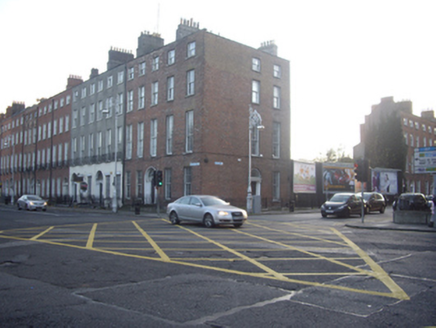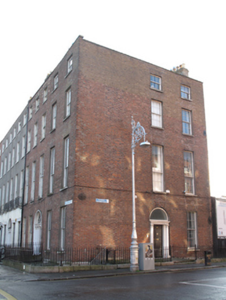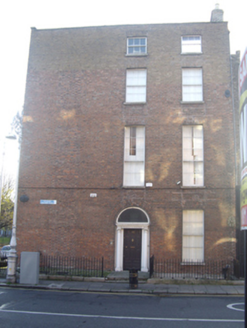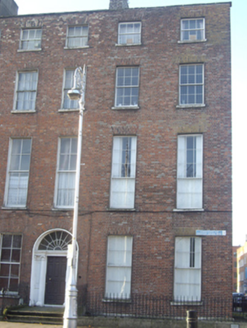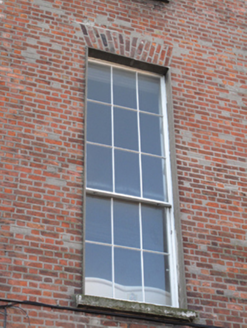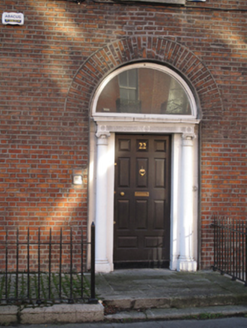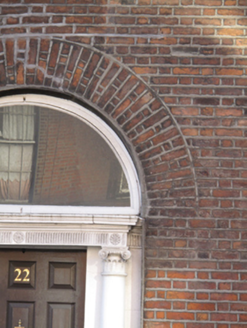Survey Data
Reg No
50010947
Rating
Regional
Categories of Special Interest
Architectural, Artistic
Original Use
House
In Use As
House
Date
1785 - 1795
Coordinates
315958, 235426
Date Recorded
28/11/2011
Date Updated
--/--/--
Description
Corner-sited end-of-terrace two-bay four-storey house over exposed basement, built c.1790, with two-bay east side elevation fronting onto Mountjoy Square giving impression of being part of five-bay house on Mountjoy Square. Still in private residential use. Hipped slate roof with yellow brick chimneystack rising from west gable having clay pots. Roof hidden behind parapet wall with granite coping and replacement uPVC rainwater goods to west elevation. Red brick walls laid in Flemish bond rebuilt to top floor with chamfered granite plinth course over ruled-and-lined rendered walls to basement. Gauged brick flat-arched window openings with patent rendered reveals, granite sills and replacement timber sliding sash windows, nine-over-six pane to first floor, six-over-six pane to ground and second floors and three-over-three pane to top floor. Replacement timber French doors to basement. Gauged brick round-arched door opening with painted stone Ionic doorcase. Replacement timber panelled door flanked by engaged Ionic columns on plinth bases supporting stepped and fluted lintel cornice and plain fanlight. Door opens onto granite platform and two granite steps bridging basement. Platform and basement area enclosed by wrought-iron railings on moulded granite plinth wall with filled in section to east with matching iron gate and replacement steel steps to basement. Blind west side elevation with roughcast rendered walls to second floor level and rebuilt in yellow brick to remainder.
Appraisal
No. 22 is one of only six original houses to survive on this terrace of Mountjoy Square West. The house forms a 'bookend' to the terrace and the elevation to Mountjoy Square was designed to read as a five-bay house, along with No. 67 to the south, providing yet another interesting solution to terraces turning a corner. The house retains its classical doorcase, platform and railings and has correctly specified replacement timber sash windows. It constitutes an important corner building as part of the overall composition of the square. Mountjoy Square was built on lands formerly belonging to Saint Mary’s Abbey and laid out in 1790 by Luke Gardiner II and completed by 1818. Originally called Gardiner Square, the plan was to develop a strong vista from Custom House to Mountjoy Square then on to the intended Royal Circus. Although failing to achieve his original ambitious plan for a palace façade with flanking domed pavilions, Mountjoy Square is more carefully laid out than the city’s other Georgian squares. Symmetrically-planned with a unified parapet height and the east-west approaches offset to create a sense of enclosure. After falling into serious neglect and dereliction throughout the twentieth century, resulting in the loss of one third of its original buildings, the square has since been repaired.
